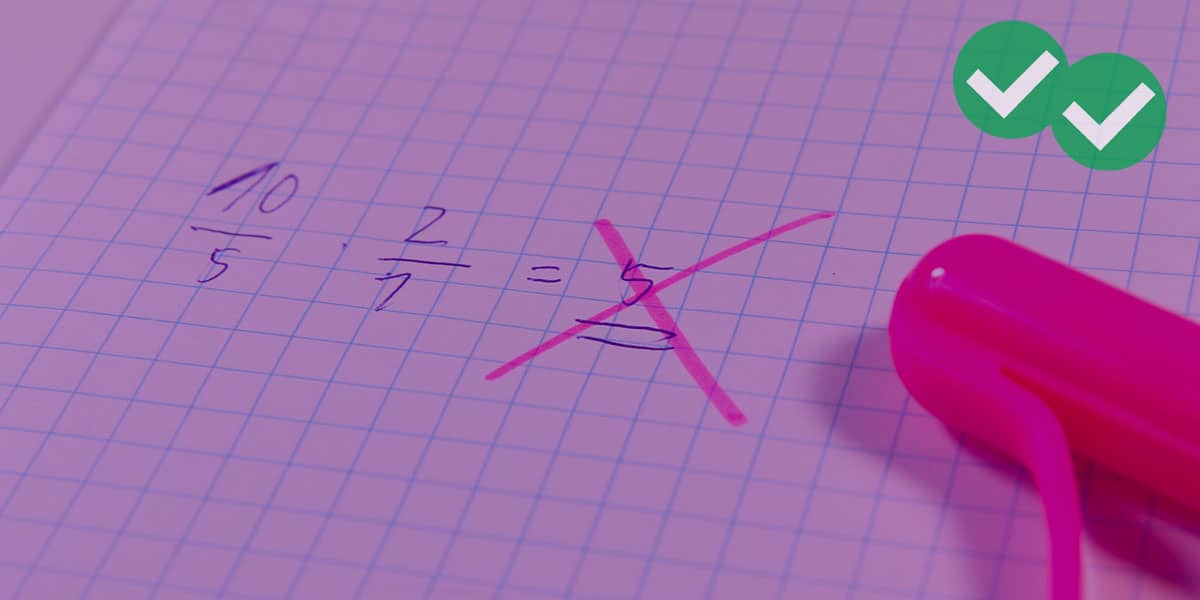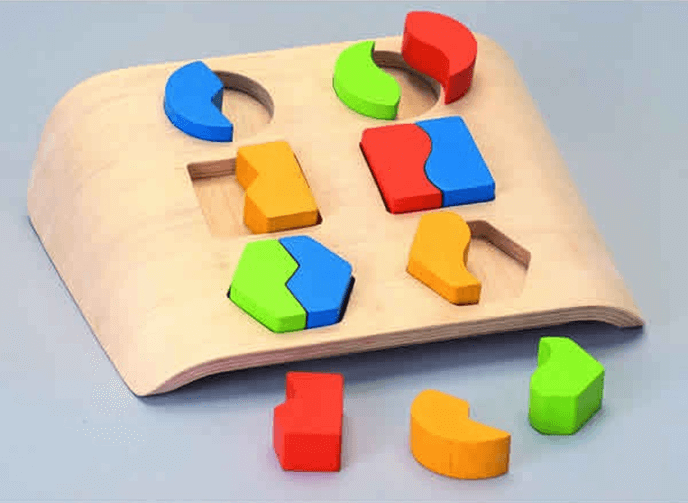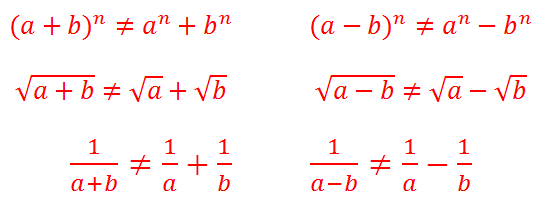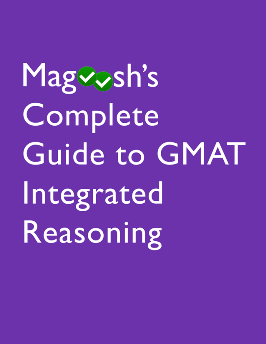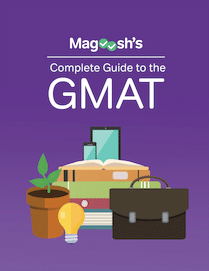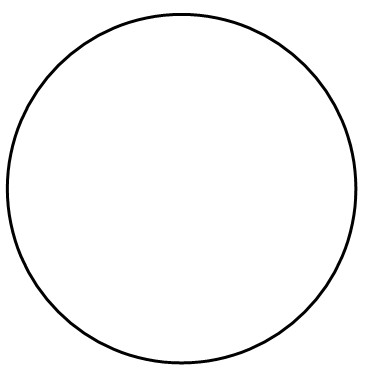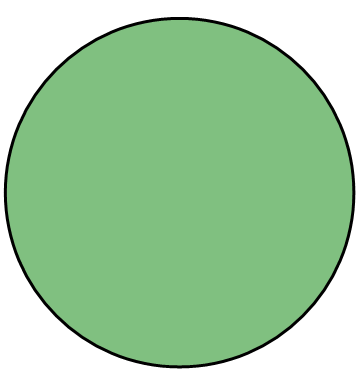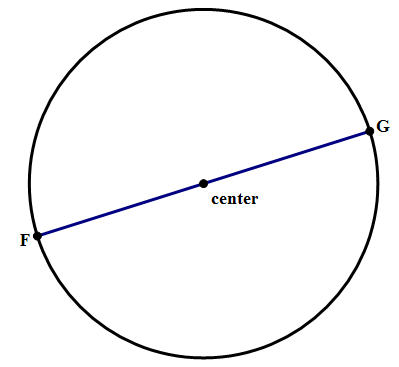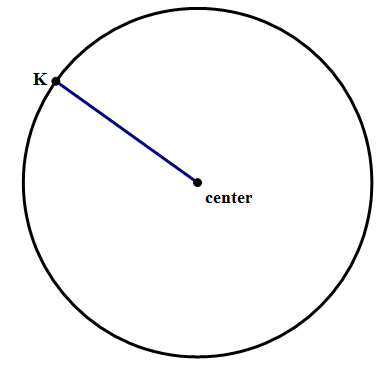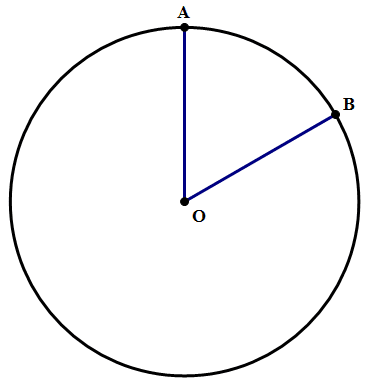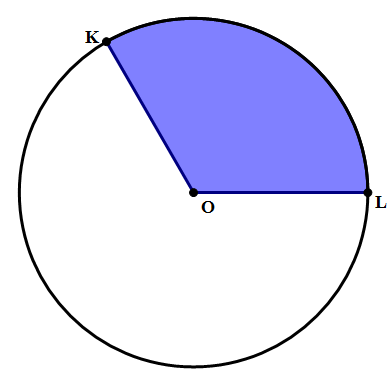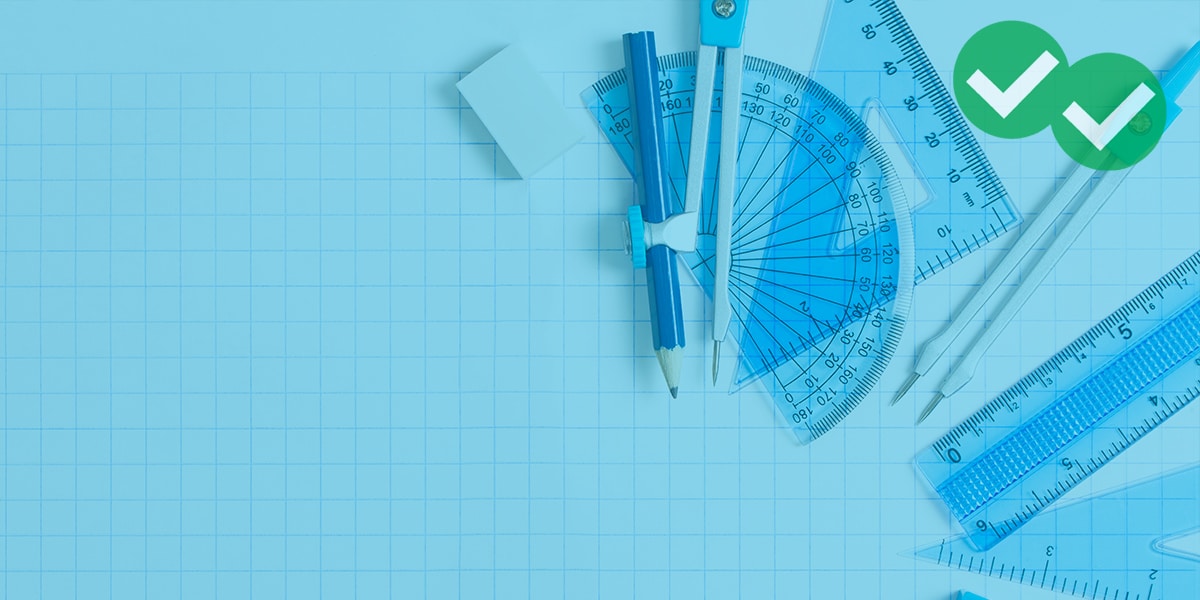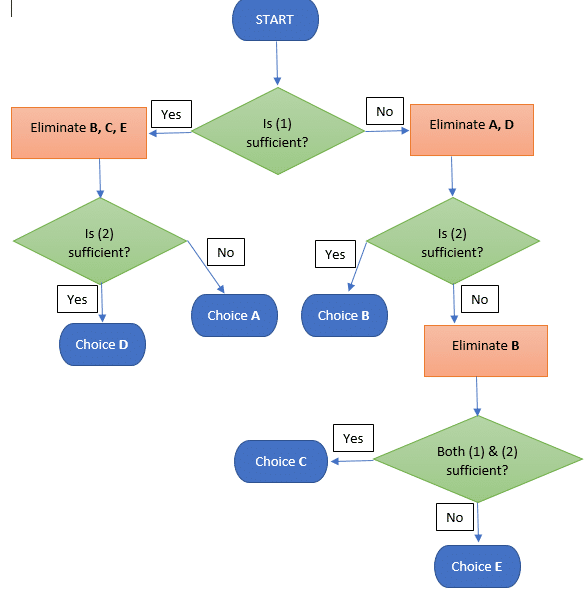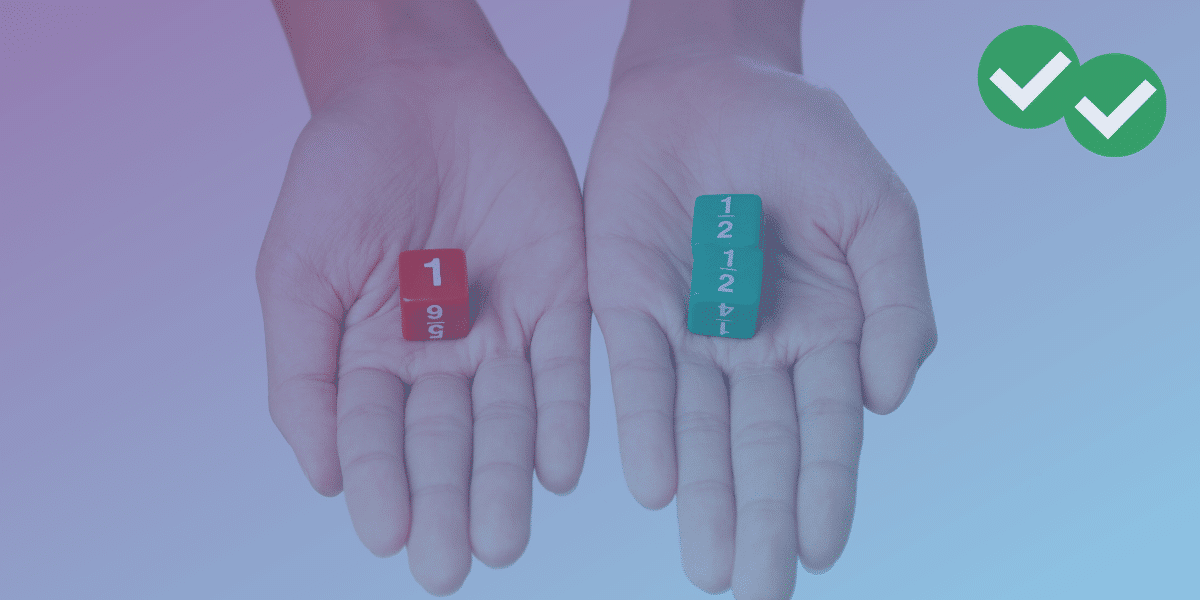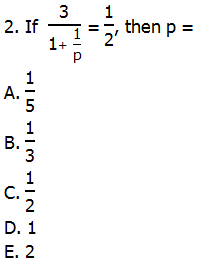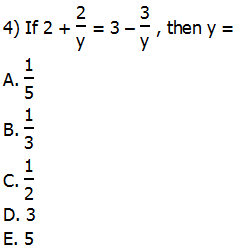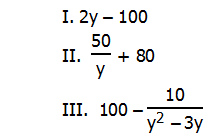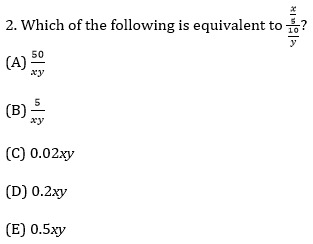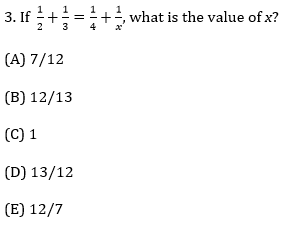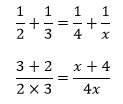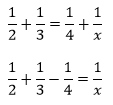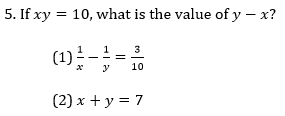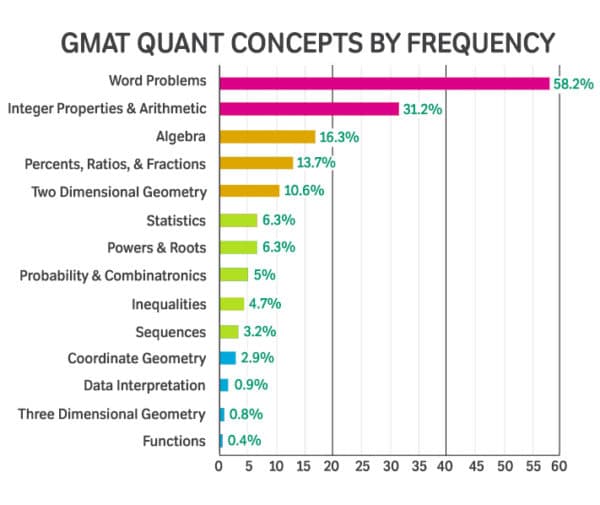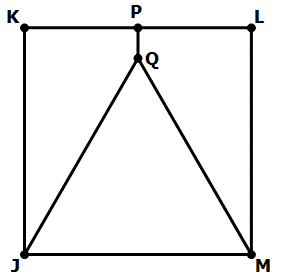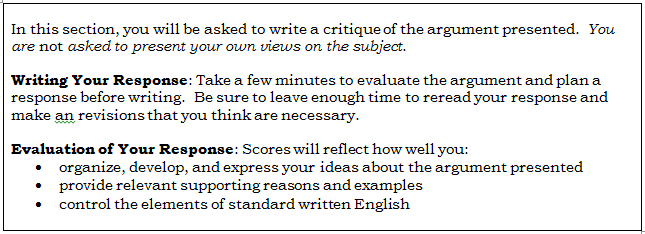
If you want to prepare for the GMAT in three months and you need to boost your verbal score, you’ll need a strong GMAT verbal study plan to help you get there. With that in mind, Magoosh’s experts have put together this plan to help you figure out how to study GMAT verbal!
Not only will this GMAT verbal study plan help you to get organized, but it will also take you through the major content areas of the test in depth, from Critical Reasoning to Sentence Correction to Reading Comprehension. Ready to dive in?
Getting Started
[*]The GMAT Verbal study plan:
[/list]
GMAT Diagnostic Test.
- 3 Month GMAT Study Schedule for Beginners: Help! Math and verbal both scare the living bejeebers out of me! I need all the help and support I can get! Help!
- 3 Month GMAT Study Schedule (Math Focused): I have a natural affinity with the verbal, but the math is far less intuitive for me. I would like to focus more there.
- 3 Month GMAT Study Schedule (Verbal Focused): Me a math nerd. Me think all math easy. Me have big verbal problems. One day, me will talk good.
- Version D (For Advanced Students): I actually feel reasonably comfortable with math & verbal; if I took the test today, I’d get around 600-650. I’m interested in refining my understanding, and getting into the upper 700s region in the next twelve weeks.
FAQ: Will this study plan prepare me for excellence in both Verbal and Quant on the GMAT?
Because I am assuming you have a strong math background already, this verbal study plan covers all the Verbal lessons in Magoosh twice. It also includes, as an essential part, a significant amount of reading. If you follow all parts of this plan diligently, all the information you will need for an elite score will pass before your eyes.
How well you do will depend on everything you bring: how quickly you learn, how deeply you remember, how well you assimilate and integrate, how astutely you discern connections, how diligent you are, how conscientious you are, and how dedicated you are. See this blog for more about getting the most out of the GMAT verbal study plan.
- Do you need to adapt this GMAT verbal study plan to meet your needs? Check out this blog post for adjustment tips!

OG2020. If you are going to buy a new guide, get that one.
If you happen to own either the OG2019, OG2018, OG2017, or even the previous OG2016, then it would be no problem using either of those with this study guide.
- Don’t write in the official guide or any prep books. Do all your work on separate paper or on a computer. If you need to look at a problem again, it is still fresh and unmarked.
- The code in the back of the OG will give you access to GMAC’s Integrated Reasoning website with 50 IR practice questions; you’ll also need these.
[*]A Premium subscription to Magoosh
[*]The Magoosh mobile app for your iPhone or Android
[*]The Magoosh GMAT eBook
[*]The Magoosh GMAT Math Flashcards
[*]The Magoosh GMAT Idiom Flashcards
[*]Three volumes of the 10-volume Manhattan GMAT series. These books are about the best material available in hard-copy print form. The volumes you should get for this GMAT verbal study plan are: Critical Reasoning, Reading Comprehension, or Sentence Correction.
The primary reason you are getting this volume is to get the code in the inside back cover: that code will give you access to one MGMAT online GMAT CAT, which you will take later in this GMAT verbal study plan.
- Once again, it is important not to write in these books, as you will go through them twice.
[/list]
[*]A journal or notebook (yes, a physical hard copy item)
[*]The one online forum: GMAT Club
These are great places to ask questions about anything GMAT related, or simply to check out the discussions and see how others are preparing.
[*]Outside reading material: We recommend outside reading, over and above any GMAT-specific materials, because a habit of reading is one of the best ways to improve your GMAT verbal score across the board. In particular, for non-native speakers, a habit of outside reading is essential for mastering the GMAT Verbal section. It’s very important for non-native speakers to push themselves to read material as sophisticated and challenging as they can handle.
Read the Wall Street Journal and the business section of sophisticated newspapers such as the New York Times and the Washington Post. Force yourself to read articles discussing topics with which you are unfamiliar. Read periodicals, such as the Economist magazine and Bloomberg Businessweek; the Economist magazine is a particularly sophisticated source and it would be good to read this at least a few times a week. For more suggestions on what to read, see: GMAT Reading List.
For more on how to use outside reading to prepare you for the GMAT, see: How to Improve your GMAT Verbal Score
[*]Magoosh’s Complete GMAT Guide: This comprehensive web-based guide to the GMAT gives you the quick but useful overview you need to understand this test. You’ll see how the GMAT is designed and scored, what skills it tests, how to find and use the best GMAT prep, and how to study for GMAT test sections.
[*]A guide to GMAT Practice Test Resources: This page includes instructions on where to find good full-length GMAT practice tests, and how to take practice tests and incorporate them into your studies.[/list]
Optional Material
Nova’s GMAT Math Prep Course: As explained in this review, this book is purely a collection of practice problems. Because the individual days in this GMAT verbal study plan are already busy, I did not assign any problems from this book.
If you find you have some additional time, and would like to challenge yourself with more math practice, then by all means, get this book, and you will have math practice problems to your heart’s content. If you can do everything in this book, in addition to all the math problems included in this GMAT verbal study plan, you will able to handle anything the GMAT Quant section throws at you.

whole set of MGMAT books: I would recommend this if you imagine that you will have a great deal of extra time and would like to devote that time to studying more high-quality resources. A quicker and cheaper way to get the six MGMAT practice tests would be to pay $50 to buy the 6 MGMAT Practice GMAT CATs by themselves.[/list]


the test-maker’s website and read about the structure of the GMAT. Click on each subsection on that page to read about the individual sections.[*]Take the Diagnostic Test, found toward the beginning of the OG. Grade it, but you don’t have to read through all the explanations today. If you did much much better than you expected in either math or verbal, you may choose to re-evaluate which version (A, B, C, D) you are following.[*]In the Magoosh GMAT Idiom Flashcards, start learning the cards in the first deck, the Basic I deck. Spend 10 minutes with these cards.[*]Read the blog article GMAT English.[/list]
Week One, Day Two
- For the Diagnostic test you took yesterday, go over the explanations. For questions you got right, simply skim the explanation to verify that you go the question right for the right reason. If you got the question wrong, read the explanation carefully, writing in your journal any math/verbal concept you didn’t know or understand, as well as anything about the question type that you didn’t understand. (If you got many questions wrong on the Diagnostic, you may have to spread this step out over the next few nights)
- In the OG
- Read the introduction to the Problem Solving section, and do 16 PS
- Read the introduction to the Reading Comprehension section, do 3 RC passage with all the associated questions
Whenever you do OG questions, always check your answers when you are done with the batch, and read the explanation of anything you got wrong. Take notes in your journal on anything you need to remember from the solutions. Note that not all the OG explanations are of high quality, and some are not good at all. As an alternative, for all the questions in the OG, you can see much better explanations in our video solutions.
- Watch Magoosh lesson videos:
- Intro to the GMAT: all ten videos
- In The Magoosh GMAT eBook, read
- from the beginning of the book up to, but not including, the AWA section
- from the beginning of the Quantitative section up to, but not including, the DS section
- from the beginning of the Verbal section up to, but not including, the CR section
- In the Magoosh GMAT Idiom Flashcards, continue learning the cards in the first deck, the Basic I deck. Spend 10 minutes with these cards.
- Read the blog article Overcome GMAT Anxiety
Week One, Day Three
- In the OG:
- In the Math Review, read the first twenty pages, taking notes in your journal on anything new, rusty, or unfamiliar
- Read the introduction to the Data Sufficiency section, and do 16 DS questions
- Read the introduction to the Critical Reasoning section, and do 16 CR questions
- Watch Magoosh lesson videos:
- Math: skim through the 8 videos of the General Math Strategies module
- In The Magoosh GMAT eBook, read
- DS to the end of the Quantitative Section
- CR section to the end of the eBook
- In the Magoosh GMAT Idiom Flashcards, continue learning the cards in the first deck, the Basic I deck. Spend 10 minutes with these cards.
- Read the blog article Beating GMAT Stress
Week One, Day Four
- In the OG, read the Math Review, up to the end of the Algebra section, taking notes in your journal on anything new, rusty, or unfamiliar
- Watch Magoosh lesson videos:
- In Magoosh
- Do 12 PS questions
- Do 13 CR questions
Whenever you do Magoosh questions, if you get a question wrong, watch the video right then, and take notes in your journal about what concepts tripped you up.
NOTE: In all Magoosh practice, from the “Start a Practice Session” page, in Section choose the question type; for subjects, clear all, so that no subject is checked; for difficulty, choose “Adaptive;” and, at least at the beginning, select “Unanswered” questions.
NOTE: When you do Magoosh practice questions, do not select individual topics that are familiar. When you learn a particular lesson, resist the urge to practice that material right there and then. This GMAT verbal study plan is based on the philosophy that you should see a random mix of topics every time you practice as you move through the OG. Yes, this means you will make some mistakes in the beginning, especially with topics you haven’t learned thoroughly yet, but if you study those mistakes carefully, that will prime your mind for understanding these ideas more deeply when you get to them in the lessons. Also, it’s important to get accustomed as soon as possible to the random mix of topics you will see, one after the other, on test day. - In the Magoosh GMAT Idiom Flashcards, continue learning the cards in the first deck, the Basic I deck. Spend 10 minutes with these cards.
- Read the blog article The GMAT, Business School, and You: the Big Picture
Week One, Day Five
- In the OG, read the Math Review, up to the end of the Geometry section, taking notes in your journal on anything new, rusty, or unfamiliar
- In the OG
- Do 16 PS questions
- Read the introduction to the Sentence Correction section, and do 16 SC questions
- Watch Magoosh lesson videos:
- Math: skim the five videos in the Intro to Data Sufficiency Module
- In the Magoosh GMAT Idiom Flashcards, continue learning the cards in the first deck, the Basic I deck. Spend 10 minutes with these cards.
- Read the blog article Zen Boot Camp for the GMAT
Week One, Day Six
- In the OG
- Finish reading the Math Review, taking notes in your journal on anything new, rusty, or unfamiliar
- Read the introduction to the AWA section; skim the question prompts to get a sense of the variety
- In The Magoosh GMAT eBook, read the AWA section
- Read the following blogs about the AWA section:
Now, you are going to write a practice essay. From the Argument AWA prompts in the OG that you just read, pick one at random (or have someone pick it for you), and take 30 minutes to write an essay on the computer. (If you can turn off spellcheck and autocorrect, do so, as you will not have that feature on test day.)
Now that you have this essay, what do you do with it? If you have a friend or mentor who is a gifted writer, see whether they would read the essay for you and critique it. Some folks hire a writing tutor specifically for this. If they are willing, you can show them the assessment criteria in the OG, and ask them to follow it. Alternately, you can upload your essay in the online forums and ask for feedback. See this blog for other options. - In the Magoosh GMAT Math Flashcards, drill the first three decks: Algebra; Fractions, Ratios, and Percents; and Geometry.
NOTE: If you are strong in math, then you probably will breeze through these cards, knowing just about everything. Note the few cards that you didn’t know right away.

Week Two
Week Two, Day One
- Watch Magoosh lesson videos
- Verbal: the first five lesson videos
NOTE: In this GMAT verbal study plan, after the intro videos, no further math lesson videos are assigned, because it is assumed that you are strong at math. As you practice problems and find math concepts that you would like to understand better, dip into the math lessons videos on those particular topics. This plan leaves it entirely to your discretion how much math you want to learn or review.- In Magoosh
- Do the Quiz at the end of the Arithmetic & Fractions lesson module
- Do 12 PS questions
- Do 3 RC passage with all the associated questions
NOTE: In lieu of watching the full math lessons, this GMAT verbal study plan will assign the quizzes at the end of the math modules. If you do well on the quiz, then you probably know most of the math in the module. If you “fail” the quiz, review a few of the videos, and take the quiz again until you can pass it. - In the Magoosh GMAT Idiom Flashcards, continue learning the cards in the first deck, the Basic I deck. Spend 10 minutes with these cards.
- In the MGMAT Volume 6: Critical Reasoning read Chapter 1, doing any practice problems in that section and taking notes on anything new.
- Spend at least one hour on the outside reading of your choice; once again, see this blog article for suggestions of what to read. Reading is the very best way to develop instincts for the way writers use language in the business world. Pay attention to sentence structures. Pay attention to arguments. Pay attention to main ideas & roles of paragraphs.
Week Two, Day Two
- In OG
- Do 3 RC passages with all the associated questions
- Watch Magoosh lesson videos
- Verbal: the next five lesson videos
- In the Magoosh GMAT Idiom Flashcards, continue learning the cards in the first deck, the Basic I deck. Spend 10 minutes with these cards.
- In the MGMAT Volume 6: Critical Reasoning, read Chapter 2, doing any practice problems in that section and taking notes on anything new.
- Spend at least one hour on the outside reading of your choice. Pay attention to sentence structures. Pay attention to arguments. Pay attention to main ideas & roles of paragraphs.
Week Two, Day Three
- Watch Magoosh lesson videos:
- Verbal: the next five lesson videos
- In Magoosh
- Do the Quiz at the end of the Percents & Ratios lesson module
- Do 12 DS questions Do 13 CR questions
- In the Magoosh GMAT Idiom Flashcards, continue learning the cards in the first deck, the Basic I deck. Spend 10 minutes with these cards.
- In the MGMAT Volume 6: Critical Reasoning, read Chapter 3, doing any practice problems in that section and taking notes on anything new.
- Spend at least one hour on the outside reading of your choice. Pay attention to sentence structures. Pay attention to arguments. Pay attention to main ideas & roles of paragraphs.
Week Two, Day Four
- In OG
- Do 16 DS questions
- Do 16 CR questions
- Watch Magoosh lesson videos
- Verbal: the next five lesson videos
- In the Magoosh GMAT Idiom Flashcards, continue learning the cards in the first deck, the Basic I deck. Spend 10 minutes with these cards.
- In the MGMAT Volume 6: Critical Reasoning, read Chapter 4, doing any practice problems in that section and taking notes on anything new.
- Spend at least one hour on the outside reading of your choice. Pay attention to sentence structures. Pay attention to arguments. Pay attention to main ideas & roles of paragraphs.
Week Two, Day Five
- Watch Magoosh lesson videos
- Verbal: the next five lesson videos
NOTE: as you finish with verbal lesson modules, you will see quizzes at the end of the module. Take each quiz, and if you don’t pass, keep restudying and retaking the quiz until you can pass it. - In Magoosh
- Do the Quiz at the end of the Integer Properties lesson module
- Do 12 PS questions
- Do 11 SC questions
- In the Magoosh GMAT Idiom Flashcards, continue learning the cards in the first deck, the Basic I deck. Spend 10 minutes with these cards.
- In the MGMAT Volume 6: Critical Reasoning, read Chapter 5, doing any practice problems in that section and taking notes on anything new.
- Spend at least one hour on the outside reading of your choice. Pay attention to sentence structures. Pay attention to arguments. Pay attention to main ideas & roles of paragraphs.
Week Two, Day Six
- In the OG, read the Integrated Reasoning section
- In The Magoosh GMAT eBook, read the IR section
- Read the entire Magoosh IR eBook.
- Write another practice essay. From the Argument AWA prompts in the OG, pick another at random (or have someone pick it for you), and take 30 minutes to write an essay on the computer. (If you can turn off spellcheck and autocorrect, do so, as you will not have that feature on test day.)
Now that you have this essay, what do you do with it? If you have a friend or mentor who is a gifted writer, see whether they would read the essay for you and critique it. Some folks hire a writing tutor specifically for this. If they are willing, you can show them the assessment criteria in the OG, and ask them to follow it. Alternately, you can upload your essay in the online forms and ask for feedback. - In the Magoosh GMAT Math Flashcards, drill the next three decks: Number Properties I & II and Statistics & Probability. Note any cards you didn’t get right away.

Week Three
Week Three, Day One
- Watch Magoosh lesson videos
- Verbal: the next five lesson videos
- In Magoosh
- Do the Quiz at the end of the Algebra, Equations, and Inequality lesson module
- Do 12 PS questions
- Do 3 RC passage with all the associated questions
- In the Magoosh GMAT Idiom Flashcards, start learning the cards in the second deck, the Basic II deck. Spend 10 minutes with these cards.
- In the MGMAT Volume 6: Critical Reasoning, read Chapter 6, doing any practice problems in that section and taking notes on anything new.
- Spend at least one hour on the outside reading of your choice. Pay attention to sentence structures. Pay attention to arguments. Pay attention to main ideas & roles of paragraphs.
Week Three, Day Two
- In OG
- Do 16 PS questions
- Do 16 SC questions
- Watch Magoosh lesson videos
- Integrated Reasoning: the first eight lesson videos
- In the Magoosh GMAT Idiom Flashcards, continue learning the cards in the second deck, the Basic II deck. Review cards from this and the previous deck. Spend 10 minutes with these cards.
- In the MGMAT Volume 6: Critical Reasoning, read Chapter 7, doing any practice problems in that section and taking notes on anything new.
- Spend at least one hour on the outside reading of your choice. Pay attention to sentence structures. Pay attention to arguments. Pay attention to main ideas & roles of paragraphs.
Week Three, Day Three
- Watch Magoosh lesson videos
- Verbal: the next five lesson videos
- In Magoosh
- Do the Quiz at the end of the Word Problem lesson module
- Do 15 DS questions
- Do 13 CR questions
- In the Magoosh GMAT Idiom Flashcards, continue reviewing the cards from the second deck, the Basic II deck and from the previous deck. Spend 10 minutes with these cards.
- In the MGMAT Volume 6: Critical Reasoning read Chapter 8, doing any practice problems in that section and taking notes on anything new.
- Spend at least one hour on the outside reading of your choice. Pay attention to sentence structures. Pay attention to arguments. Pay attention to main ideas & roles of paragraphs.
Week Three, Day Four
- In OG
- Do 16 DS questions
- Do 3 RC passages with all the associated questions
- Watch Magoosh lesson videos
- Integrated Reasoning: the next seven lesson videos
- In the Magoosh GMAT Idiom Flashcards, continue reviewing the cards from the second deck, the Basic II deck and from the previous deck. Spend 10 minutes with these cards.
- In the MGMAT Volume 7: Reading Comprehension, read Chapter 1, doing any practice problems in that section and taking notes on anything new.
- Spend at least one hour on the outside reading of your choice. Pay attention to sentence structures. Pay attention to arguments. Pay attention to main ideas & roles of paragraphs.
Week Three, Day Five
- Watch Magoosh lesson videos
- Verbal: the next five lesson videos
- In Magoosh
- Do the Quiz at the end of the Powers and Roots lesson module
- Do 12 PS questions
- Do 11 SC questions
- In the Magoosh GMAT Idiom Flashcards, continue reviewing the cards from the second deck, the Basic II deck and from the previous deck. Spend 10 minutes with these cards.
- In the MGMAT Volume 7: Reading Comprehension, read Chapter 2, doing any practice problems in that section and taking notes on anything new.
- Spend at least one hour on the outside reading of your choice. Pay attention to sentence structures. Pay attention to arguments. Pay attention to main ideas & roles of paragraphs.
Week Three, Day Six
- Go to GMAC’s official IR practice questions: Use the access code given in the back of the OG, logging in here. This site contains the online version of all the questions in the OG, in case you want to practice the identical questions online instead of on paper; in addition, the official IR practice questions live here. Uncheck everything else and do all the Multi-Source Reasoning questions, questions #1-18, setting yourself a 45-minute time limit. When you are done, go back and read carefully the full explanation for each question. Take notes on anything you need to remember.
- In Magoosh
- In the Magoosh GMAT Math Flashcards, drill the next three decks: Mixed Practice I – III. Note any cards you didn’t get right away.

Week Four
Week Four, Day One
- Watch Magoosh lesson videos
- Verbal: the next five lesson videos
- In Magoosh
- Do the Quiz at the end of the Geometry lesson module
- Do 12 PS questions
- Do 3 RC passage with all the associated questions
- In the Magoosh GMAT Idiom Flashcards, continue reviewing the cards from the second deck, the Basic II deck and from the previous deck. Spend 10 minutes with these cards.
- In the MGMAT Volume 7: Reading Comprehension, read Chapter 3, doing any practice problems in that section and taking notes on anything new.
- Spend at least one hour on the outside reading of your choice. Pay attention to sentence structures. Pay attention to arguments. Pay attention to main ideas & roles of paragraphs.
Week Four, Day Two
- In OG
- Do 16 PS questions
- Do 16 CR questions
- Watch Magoosh lesson videos
- Integrated Reasoning: the last five lesson videos
- In the Magoosh GMAT Idiom Flashcards, continue reviewing the cards from the second deck, the Basic II deck and from the previous deck. Spend 10 minutes with these cards.
- In the MGMAT Volume 7: Reading Comprehension, read Chapter 4, doing any practice problems in that section and taking notes on anything new.
- Spend at least one hour on the outside reading of your choice. Pay attention to sentence structures. Pay attention to arguments. Pay attention to main ideas & roles of paragraphs.
Week Four, Day Three
- Watch Magoosh lesson videos
- Verbal: the next five lesson videos
- In Magoosh
- Do the Quiz at the end of the Coordinate Geometry lesson module
- Do 12 DS questions
- Do 13 CR questions
- In the Magoosh GMAT Idiom Flashcards, continue reviewing the cards from the second deck, the Basic II deck and from the previous deck. Spend 10 minutes with these cards.
- In the MGMAT Volume 7: Reading Comprehension, read Chapter 5, doing any practice problems in that section and taking notes on anything new.
- Spend at least one hour on the outside reading of your choice. Pay attention to sentence structures. Pay attention to arguments. Pay attention to main ideas & roles of paragraphs.
Week Four, Day Four
- In OG
- Do 16 DS questions
- Do 16 SC questions
- Watch Magoosh lesson videos
- Verbal: the next five lesson videos
- In the Magoosh GMAT Idiom Flashcards, continue reviewing the cards from the second deck, the Basic II deck and from the previous deck. Spend 10 minutes with these cards.
- In the MGMAT Volume 7: Reading Comprehension, read Chapter 6, doing any practice problems in that section and taking notes on anything new.
- Spend at least one hour on the outside reading of your choice. Pay attention to sentence structures. Pay attention to arguments. Pay attention to main ideas & roles of paragraphs.
Week Four, Day Five
- Watch Magoosh lesson videos
- Verbal: the next five lesson videos
- In Magoosh
- Do the Quiz at the end of the Statistics lesson module
- Do 12 PS questions
- Do 11 SC questions
- In the Magoosh GMAT Idiom Flashcards, continue reviewing the cards from the second deck, the Basic II deck and from the previous deck. Spend 10 minutes with these cards.
- In the MGMAT Volume 8: Sentence Correction, read Appendix B, the Glossary. Most of these terms should be familiar from the Magoosh lesson videos, but take notes on anything that you don’t remember.
- Spend at least one hour on the outside reading of your choice. Pay attention to sentence structures. Pay attention to arguments. Pay attention to main ideas & roles of paragraphs.
Week Four, Day Six
- Go back to GMAC’s official IR practice questions: Use the access code given in the back of the OG, logging in here. Once again, this site contains the online version of all the questions in the OG, in case you want to practice the identical questions online instead of on paper; in addition, the official IR practice questions live here. Uncheck everything else and do the remaining 38 IR questions, in three batches, with the following times: six Table Analysis (15 minutes); ten Graphics Interpretation (25 minutes); and sixteen Two-Part Analysis questions (40 minutes). When you are done, go back and read carefully the full explanation for each question. Take notes on anything you need to remember.
- In the Magoosh GMAT Math Flashcards, drill the next three decks: Mixed Practice IV – VI. Note any cards you didn’t get right away.
- Spend at least one hour on the outside reading of your choice. Pay attention to sentence structures. Pay attention to arguments. Pay attention to main ideas & roles of paragraphs.

Magoosh GMAT Idiom Flashcards, start learning the cards from the third deck, the Advanced I deck. Spend 10 minutes with these cards.[*]In the MGMAT Volume 8: Sentence Correction, read Chapter 1, doing any practice problems in that section and taking notes on anything new.[*]Spend at least one hour on the outside reading of your choice. Pay attention to sentence structures. Pay attention to arguments. Pay attention to main ideas & roles of paragraphs.[/list]
Week Five, Day Two
- In OG
- Do 16 PS questions
- Do 3 RC passages with all the associated questions
- Watch Magoosh lesson videos
- Verbal: the next five lesson videos
- In the Magoosh GMAT Idiom Flashcards, continue reviewing the cards from the third deck, the Advanced I deck and from the previous decks. Spend 10 minutes with these cards.
- In the MGMAT Volume 8: Sentence Correction, read Chapter 2, doing any practice problems in that section and taking notes on anything new.
- Spend at least one hour on the outside reading of your choice. Pay attention to sentence structures. Pay attention to arguments. Pay attention to main ideas & roles of paragraphs.
Week Five, Day Three
- Watch Magoosh lesson videos
- Verbal: the next five lesson videos
- In Magoosh
- Do the Quiz at the end of the Probability lesson module
- Do 12 DS questions
- Do 13 CR questions
- In the Magoosh GMAT Idiom Flashcards, continue reviewing the cards from the third deck, the Advanced I deck, and from the previous decks. Spend 10 minutes with these cards.
- In the MGMAT Volume 8: Sentence Correction, read Chapter 3, doing any practice problems in that section and taking notes on anything new.
- Spend at least one hour on the outside reading of your choice. Pay attention to sentence structures. Pay attention to arguments. Pay attention to main ideas & roles of paragraphs.
Week Five, Day Four
- In OG
- Do 16 DS questions
- Do 16 CR questions
- Watch Magoosh lesson videos
- Verbal: the next five lesson videos
- In the Magoosh GMAT Idiom Flashcards, continue reviewing the cards from the third deck, the Advanced I deck, and from the previous decks. Spend 10 minutes with these cards.
- In the MGMAT Volume 8: Sentence Correction, read Chapter 4, doing any practice problems in that section and taking notes on anything new.
- Spend at least one hour on the outside reading of your choice. Pay attention to sentence structures. Pay attention to arguments. Pay attention to main ideas & roles of paragraphs.
Week Five, Day Five
- Watch Magoosh lesson videos
- Verbal: the next five lesson videos
- In Magoosh
- Do 12 PS questions
- Do 11 SC questions
- In the Magoosh GMAT Idiom Flashcards, continue reviewing the cards from the third deck, the Advanced I deck, and from the previous decks. Spend 10 minutes with these cards.
- In the MGMAT Volume 8: Sentence Correction, read Chapter 5, doing any practice problems in that section and taking notes on anything new.
- Spend at least one hour on the outside reading of your choice. Pay attention to sentence structures. Pay attention to arguments. Pay attention to main ideas & roles of paragraphs.
Week Five, Day Six
- Using the code in the back of the MGMAT volume you bought, log into the MGMAT website and take the first online MGMAT CAT test.
That software does not include an AWA question. To simulate a full GMAT, begin by selecting randomly a prompt from the back of the OG, and then take 30 minutes to write the essay in a word processing program. Then, take the rest of the GMAT using that software.
Go through the entire solution after you are done, reading carefully the solutions of anything you go wrong. If you have questions that are not clarified by these solutions, you will often find MGMAT questions posted on the GMAT Club forum. Take notes in your journal on anything you got wrong and anything you need to remember. The essay you will either share with a trusted friend or mentor, or post in the online forums asking for feedback.
As much as possible, try to mimic the GMAT conditions during practice tests on this GMAT verbal study plan. Give yourself relatively short breaks in between sections. Only eat the kinds of snacks that you are planning to bring to the real GMAT. Note how your sleep the night before affects your work. Note how what you had for dinner the previous night and what you had to eat earlier that day affects your energy level and concentration. Write any observations in your journal. - Magoosh Flashcards: Take some time to review any Idiom flashcards and any math flashcards that you haven’t mastered yet.

Week Six
Week Six, Day One
- Watch Magoosh lesson videos
- Verbal: the next five lesson videos
- In Magoosh
- Do 12 PS questions
- Do 3 RC passage with all the associated questions
- In the Magoosh GMAT Idiom Flashcards, continue reviewing the cards from the third deck, the Advanced I deck, and from the previous decks. Spend 10 minutes with these cards.
- In the MGMAT Volume 8: Sentence Correction, read Chapter 6, doing any practice problems in that section and taking notes on anything new.
- Spend at least one hour on the outside reading of your choice. Pay attention to sentence structures. Pay attention to arguments. Pay attention to main ideas & roles of paragraphs.
Week Six, Day Two
- In OG
- Do 16 PS questions
- Do 16 SC questions
- Watch Magoosh lesson videos
- Verbal: the next five lesson videos
- In the Magoosh GMAT Idiom Flashcards, continue reviewing the cards from the third deck, the Advanced I deck, and from the previous decks. Spend 10 minutes with these cards.
- In the MGMAT Volume 8: Sentence Correction, read Chapter 7, doing any practice problems in that section and taking notes on anything new.
- Spend at least one hour on the outside reading of your choice. Pay attention to sentence structures. Pay attention to arguments. Pay attention to main ideas & roles of paragraphs.
Week Six, Day Three
- Watch Magoosh lesson videos
- Verbal: the next five lesson videos
- In Magoosh
- Do 12 PS questions Do 13 CR questions
- In the Magoosh GMAT Idiom Flashcards, continue reviewing the cards from the third deck, the Advanced I deck, and from the previous decks. Spend 10 minutes with these cards.
- In the MGMAT Volume 8: Sentence Correction, read Chapter 8, doing any practice problems in that section and taking notes on anything new.
- Spend at least one hour on the outside reading of your choice. Pay attention to sentence structures. Pay attention to arguments. Pay attention to main ideas & roles of paragraphs.
Week Six, Day Four
- In OG
- Do 16 DS questions
- Do 3 RC passages with all the associated questions
- Watch Magoosh lesson videos
- Verbal: the next five lesson videos
- In the Magoosh GMAT Idiom Flashcards, continue reviewing the cards from the third deck, the Advanced I deck, and from the previous decks. Spend 10 minutes with these cards.
- In the MGMAT Volume 8: Sentence Correction, read Chapter 9, doing any practice problems in that section and taking notes on anything new.
- Spend at least one hour on the outside reading of your choice. Pay attention to sentence structures. Pay attention to arguments. Pay attention to main ideas & roles of paragraphs.
Week Six, Day Five
- Take a day to watch any Magoosh math videos that pique your curiosity.
- In Magoosh
- Do 12 PS questions
- Do 11 SC questions
- In the Magoosh GMAT Idiom Flashcards, continue reviewing the cards from the third deck, the Advanced I deck, and from the previous decks. Spend 10 minutes with these cards.
- In the MGMAT Volume 8: Sentence Correction, read Chapter 10, doing any practice problems in that section and taking notes on anything new.
- Spend at least one hour on the outside reading of your choice. Pay attention to sentence structures. Pay attention to arguments. Pay attention to main ideas & roles of paragraphs.
Week Six, Day Six
- Take the next online MGMAT CAT test.
Once again, this software does not include an AWA question. To simulate a full GMAT, begin by selecting randomly a prompt from the back of the OG, and then take 30 minutes to write the essay in a word processing program. Then, take the rest of the GMAT using that software.
Go through the entire solution after you are done, reading carefully the solutions of anything you go wrong. If you have questions that are not clarified by these solutions, you will often find MGMAT questions posted on the GMAT Club forum. Take notes in your journal on anything you got wrong and anything you need to remember. The essay you will either share with a trusted friend or mentor, or post in the online forums asking for feedback.
As much as possible, try to mimic the GMAT conditions. Give yourself relatively short breaks in between sections. Only eat the kinds of snacks that you are planning to bring to the real GMAT. Note how your sleep the night before affects your work. Note how what you had for dinner the previous night and what you had to eat earlier that day affects your energy level and concentration. Write any observations in your journal. - Magoosh Flashcards: Take some time to review any Idiom flashcards and any math flashcards that you haven’t mastered yet.

Week Seven
Week Seven, Day One
- Watch Magoosh lesson videos
- Verbal: the first five lesson videos. NOTE: Last week, you should have finished all the verbal lessons. Now, you are going to watch the entire series again from the beginning. Pay very close attention to what points you didn’t remember from the first time or that you understand better upon hearing them for a second time.
- In Magoosh
- Do 12 PS questions
- Do 3 RC passage with all the associated questions
- In the Magoosh GMAT Idiom Flashcards, start learning the cards from the fourth deck, the Advanced II deck. Spend 10 minutes with these cards.
- In the MGMAT Volume 8: Sentence Correction, read Chapter 11, doing any practice problems in that section and taking notes on anything new.
- Spend at least one hour on the outside reading of your choice. Pay attention to sentence structures. Pay attention to arguments. Pay attention to main ideas & roles of paragraphs.
Week Seven, Day Two
- In OG
- Do 16 PS questions
- Do 16 SC questions
- Watch Magoosh lesson videos
- Verbal: the next five lesson videos
- In the Magoosh GMAT Idiom Flashcards, continue reviewing the cards from the fourth deck, the Advanced II deck, and from the previous decks. Spend 10 minutes with these cards.
- In the MGMAT Volume 8: Sentence Correction, read Chapter 12, doing any practice problems in that section and taking notes on anything new.
- Spend at least one hour on the outside reading of your choice. Pay attention to sentence structures. Pay attention to arguments. Pay attention to main ideas & roles of paragraphs.
Week Seven, Day Three
- Watch Magoosh lesson videos
- Verbal: the next five lesson videos
- In Magoosh
- Do 12 DS questions
- Do 13 CR questions
- In the Magoosh GMAT Idiom Flashcards, continue reviewing the cards from the fourth deck, the Advanced II deck, and from the previous decks. Spend 10 minutes with these cards.
- In the MGMAT Volume 8: Sentence Correction, read Chapter 13, doing any practice problems in that section and taking notes on anything new.
- Spend at least one hour on the outside reading of your choice. Pay attention to sentence structures. Pay attention to arguments. Pay attention to main ideas & roles of paragraphs.
Week Seven, Day Four
- In OG
- Do 16 DS questions
- Do 3 RC passages with all the associated questions
- Watch Magoosh lesson videos
- Verbal: the next five lesson videos
- In the Magoosh GMAT Idiom Flashcards, continue reviewing the cards from the fourth deck, the Advanced II deck, and from the previous decks. Spend 10 minutes with these cards.
- In the MGMAT Volume 8: Sentence Correction, read Chapter 14, doing any practice problems in that section and taking notes on anything new.
- Spend at least one hour on the outside reading of your choice. Pay attention to sentence structures. Pay attention to arguments. Pay attention to main ideas & roles of paragraphs.
Week Seven, Day Five
- Watch Magoosh lesson videos
- Verbal: the next five lesson videos
- In Magoosh
- Do 12 PS questions
- Do 11 SC questions
- In the Magoosh GMAT Idiom Flashcards, continue reviewing the cards from the fourth deck, the Advanced II deck, and from the previous decks. Spend 10 minutes with these cards.
- In the MGMAT Volume 8: Sentence Correction, read Appendix A, the Idiom List. Many of these will be familiar to you from the Magoosh Idiom Flashcards, but take note of any you have not seen before.
- Spend at least one hour on the outside reading of your choice. Pay attention to sentence structures. Pay attention to arguments. Pay attention to main ideas & roles of paragraphs.
Week Seven, Day Six
- Take the next online MGMAT CAT test.
Once again, this software does not include an AWA question. To simulate a full GMAT, begin by selecting randomly a prompt from the back of the OG, and then take 30 minutes to write the essay in a word processing program. Then, take the rest of the GMAT using that software.
Go through the entire solution after you are done, reading carefully the solutions of anything you go wrong. If you have questions that are not clarified by these solutions, you will often find MGMAT questions posted on the GMAT Club forum. Take notes in your journal on anything you got wrong and anything you need to remember. The essay you will either share with a trusted friend or mentor, or post in the online forums asking for feedback.
As much as possible, try to mimic the GMAT conditions. Give yourself relatively short breaks in between sections. Only eat the kinds of snacks that you are planning to bring to the real GMAT. Note how your sleep the night before affects your work. Note how what you had for dinner the previous night and what you had to eat earlier that day affects your energy level and concentration. Write any observations in your journal. - Magoosh Flashcards: Take some time to review any Idiom flashcards and any math flashcards that you haven’t mastered yet.

Week Eight
Week Eight, Day One
- Watch Magoosh lesson videos
- Verbal: the next five lesson videos
- In Magoosh
- Do 12 PS questions
- Do 3 RC passage with all the associated questions
- In the Magoosh GMAT Idiom Flashcards, continue reviewing the cards from all four decks. Spend 10 minutes with these cards.
- In the MGMAT Volume 6: Critical Reasoning, read Chapter 1, doing any practice problems in that section and taking notes on anything new.
NOTE: Just as this GMAT verbal study plan had you watch all the Magoosh Verbal lesson videos twice, so it also has you read the MGMAT Verbal books twice. On this second time through, pay close attention to what slipped your notice the first time. - Spend at least one hour on the outside reading of your choice. Pay attention to sentence structures. Pay attention to arguments. Pay attention to main ideas & roles of paragraphs.
Week Eight, Day Two
- In OG:
- Do 16 PS questions
- Do 16 CR questions
- Watch Magoosh lesson videos
- Verbal: the next five lesson videos
- In the Magoosh GMAT Idiom Flashcards, continue reviewing the cards from all four decks. Spend 10 minutes with these cards.
- In the MGMAT Volume 6: Critical Reasoning, read Chapter 2, doing any practice problems in that section and taking notes on anything new.
- Spend at least one hour on the outside reading of your choice. Pay attention to sentence structures. Pay attention to arguments. Pay attention to main ideas & roles of paragraphs.
Week Eight, Day Three
- Watch Magoosh lesson videos
- Verbal: the next five lesson videos
- In Magoosh
- Do 12 DS questions
- Do 13 CR questions
- In the Magoosh GMAT Idiom Flashcards, continue reviewing the cards from all four decks. Spend 10 minutes with these cards.
- In the MGMAT Volume 6: Critical Reasoning, read Chapter 3, doing any practice problems in that section and taking notes on anything new.
- Spend at least one hour on the outside reading of your choice. Pay attention to sentence structures. Pay attention to arguments. Pay attention to main ideas & roles of paragraphs.
Week Eight, Day Four
- In OG
- Do 16 DS questions
- Do 16 SC questions
- Watch Magoosh lesson videos
- Verbal: the next five lesson videos
- In the Magoosh GMAT Idiom Flashcards, continue reviewing the cards from all four decks. Spend 10 minutes with these cards.
- In the MGMAT Volume 6: Critical Reasoning, read Chapter 4, doing any practice problems in that section and taking notes on anything new.
- Spend at least one hour on the outside reading of your choice. Pay attention to sentence structures. Pay attention to arguments. Pay attention to main ideas & roles of paragraphs.
Week Eight, Day Five
- Watch Magoosh lesson videos
- Verbal: the next five lesson videos
- In Magoosh
- Do 12 PS questions
- Do 11 SC questions
- In the Magoosh GMAT Idiom Flashcards, continue reviewing the cards from all four decks. Spend 10 minutes with these cards.
- In the MGMAT Volume 6: Critical Reasoning, read Chapter 5, doing any practice problems in that section and taking notes on anything new.
- Spend at least one hour on the outside reading of your choice. Pay attention to sentence structures. Pay attention to arguments. Pay attention to main ideas & roles of paragraphs.
Week Eight, Day Six
- Take the next online MGMAT CAT test.
Once again, this software does not include an AWA question. To simulate a full GMAT, begin by selecting randomly a prompt from the back of the OG, and then take 30 minutes to write the essay in a word processing program. Then, take the rest of the GMAT using that software.
Go through the entire solution after you are done, reading carefully the solutions of anything you got wrong. If you have questions that are not clarified by these solutions, you will often find MGMAT questions posted on the GMAT Club forum. Take notes in your journal on anything you got wrong and anything you need to remember. The essay you will either share with a trusted friend or mentor, or post in the online forums asking for feedback.
As much as possible, try to mimic the GMAT conditions. Give yourself relatively short breaks in between sections. Only eat the kinds of snacks that you are planning to bring to the real GMAT. Note how your sleep the night before affects your work. Note how what you had for dinner the previous night and what you had to eat earlier that day affects your energy level and concentration. Write any observations in your journal. - Magoosh Flashcards: Take some time to review any Idiom flashcards and any math flashcards that you haven’t mastered yet.

Magoosh GMAT Idiom Flashcards, continue reviewing the cards from all four decks. Spend 10 minutes with these cards.[*]In the MGMAT Volume 6: Critical Reasoning, read Chapter 6, doing any practice problems in that section and taking notes on anything new.[*]Spend at least one hour on the outside reading of your choice. Pay attention to sentence structures. Pay attention to arguments. Pay attention to main ideas & roles of paragraphs.[/list]
Week Nine, Day Two
- In OG
- Do 16 PS questions
- Do 3 RC passages with all the associated questions
- Watch Magoosh lesson videos
- Verbal: the next five lesson videos
- In the Magoosh GMAT Idiom Flashcards, continue reviewing the cards from all four decks. Spend 10 minutes with these cards.
- In the MGMAT Volume 6: Critical Reasoning, read Chapter 7, doing any practice problems in that section and taking notes on anything new.
- Spend at least one hour on the outside reading of your choice. Pay attention to sentence structures. Pay attention to arguments. Pay attention to main ideas & roles of paragraphs.
Week Nine, Day Three
- Watch Magoosh lesson videos
- Verbal: the next five lesson videos
- In Magoosh
- Do 12 DS questions
- Do 13 CR questions
- In the Magoosh GMAT Idiom Flashcards, continue reviewing the cards from all four decks. Spend 10 minutes with these cards.
- In the MGMAT Volume 6: Critical Reasoning, read Chapter 8, doing any practice problems in that section and taking notes on anything new.
- Spend at least one hour on the outside reading of your choice. Pay attention to sentence structures. Pay attention to arguments. Pay attention to main ideas & roles of paragraphs.
Week Nine, Day Four
- In OG
- Do 16 DS questions
- Do 16 CR questions
- Watch Magoosh lesson videos
- Verbal: the next five lesson videos
- In the Magoosh GMAT Idiom Flashcards, continue reviewing the cards from all four decks. Spend 10 minutes with these cards.
- In the MGMAT Volume 7: Reading Comprehension, read Chapter 1, doing any practice problems in that section and taking notes on anything new.
- Spend at least one hour on the outside reading of your choice. Pay attention to sentence structures. Pay attention to arguments. Pay attention to main ideas & roles of paragraphs.
Week Nine, Day Five
- Watch Magoosh lesson videos
- Verbal: the next five lesson videos
- In Magoosh
- Do 12 PS questions
- Do 11 SC questions
- In the Magoosh GMAT Idiom Flashcards, continue reviewing the cards from all four decks. Spend 10 minutes with these cards.
- In the MGMAT Volume 7: Reading Comprehension, read Chapter 2, doing any practice problems in that section and taking notes on anything new.
- Spend at least one hour on the outside reading of your choice. Pay attention to sentence structures. Pay attention to arguments. Pay attention to main ideas & roles of paragraphs.
Week Nine, Day Six
- Take the next online MGMAT CAT test.
Once again, this software does not include an AWA question. To simulate a full GMAT, begin by selecting randomly a prompt from the back of the OG, and then take 30 minutes to write the essay in a word processing program. Then, take the rest of the GMAT using that software.
Go through the entire solution after you are done, reading carefully the solutions of anything you go wrong. If you have questions that are not clarified by these solutions, you will often find MGMAT questions posted on the GMAT Club forum. Take notes in your journal on anything you got wrong and anything you need to remember. The essay you will either share with a trusted friend or mentor, or post in the online forums asking for feedback.
As much as possible, try to mimic the GMAT conditions. Give yourself relatively short breaks in between sections. Only eat the kinds of snacks that you are planning to bring to the real GMAT. Note how your sleep the night before affects your work. Note how what you had for dinner the previous night and what you had to eat earlier that day affects your energy level and concentration. Write any observations in your journal. - Magoosh Flashcards: Take some time to review any Idiom flashcards and any math flashcards that you haven’t mastered yet.

Week Ten
Week Ten, Day One
- Watch Magoosh lesson videos
- Verbal: the next five lesson videos
- In Magoosh
- Do 12 PS questions
- Do 3 RC passage with all the associated questions
- In the Magoosh GMAT Idiom Flashcards, continue reviewing the cards from all four decks. Spend 10 minutes with these cards.
- In the MGMAT Volume 7: Reading Comprehension Read Chapter 3, doing any practice problems in that section and taking notes on anything new.
- Spend at least one hour on the outside reading of your choice. Pay attention to sentence structures. Pay attention to arguments. Pay attention to main ideas & roles of paragraphs.
Week Ten, Day Two
- In OG
- Do 16 PS questions
- Do 16 SC questions
- Watch Magoosh lesson videos
- Verbal: the next five lesson videos
- In the Magoosh GMAT Idiom Flashcards, continue reviewing the cards from all four decks. Spend 10 minutes with these cards.
- In the MGMAT Volume 7: Reading Comprehension, read Chapter 4, doing any practice problems in that section and taking notes on anything new.
- Spend at least one hour on the outside reading of your choice. Pay attention to sentence structures. Pay attention to arguments. Pay attention to main ideas & roles of paragraphs.
Week Ten, Day Three
- Watch Magoosh lesson videos
- Verbal: the next five lesson videos
- In Magoosh
- Do 12 DS questions
- Do 13 CR questions
- In the Magoosh GMAT Idiom Flashcards, continue reviewing the cards from all four decks. Spend 10 minutes with these cards.
- In the MGMAT Volume 7: Reading Comprehension, read Chapter 5, doing any practice problems in that section and taking notes on anything new.
NOTE: Since you already did the practice RC problems in Ch. 6 of this book, this GMAT verbal study plan does not assign them again. If you want to do them again for extra practice some time, fit that in where you can. - Spend at least one hour on the outside reading of your choice. Pay attention to sentence structures. Pay attention to arguments. Pay attention to main ideas & roles of paragraphs.
Week Ten, Day Four
- In OG
- Do 16 DS questions
- Do 3* RC passages with all the associated questions
*If you are using the OG2015 or OG13, do only 2 RC passages on this day. - Watch Magoosh lesson videos
- Verbal: the next five lesson videos
- In the Magoosh GMAT Idiom Flashcards, continue reviewing the cards from all four decks. Spend 10 minutes with these cards.
- In the MGMAT Volume 8: Sentence Correction, read Chapter 1, doing any practice problems in that section and taking notes on anything new.
- Spend at least one hour on the outside reading of your choice. Pay attention to sentence structures. Pay attention to arguments. Pay attention to main ideas & roles of paragraphs.
Week Ten, Day Five
- Watch Magoosh lesson videos
- Verbal: the next five lesson videos
- In Magoosh
- Do 12 PS questions
- Do 11 SC questions
- In the Magoosh GMAT Idiom Flashcards, continue reviewing the cards from all four decks. Spend 10 minutes with these cards.
- In the MGMAT Volume 8: Sentence Correction, read Chapter 2, doing any practice problems in that section and taking notes on anything new.
- Spend at least one hour on the outside reading of your choice. Pay attention to sentence structures. Pay attention to arguments. Pay attention to main ideas & roles of paragraphs.
Week Ten, Day Six
- Take the last online MGMAT CAT test.
Once again, this software does not include an AWA question. To simulate a full GMAT, begin by selecting randomly a prompt from the back of the OG, and then take 30 minutes to write the essay in a word processing program. Then, take the rest of the GMAT using that software.
Go through the entire solution after you are done, reading carefully the solutions of anything you go wrong. If you have questions that are not clarified by these solutions, you will often find MGMAT questions posted on the GMAT Club forum. Take notes in your journal on anything you got wrong and anything you need to remember. The essay you will either share with a trusted friend or mentor, or post in the online forums asking for feedback.
As much as possible, try to mimic the GMAT conditions. Give yourself relatively short breaks in between sections. Only eat the kinds of snacks that you are planning to bring to the real GMAT. Note how your sleep the night before affects your work. Note how what you had for dinner the previous night and what you had to eat earlier that day affects your energy level and concentration. Write any observations in your journal. - Magoosh Flashcards: Take some time to review any Idiom flashcards and any math flashcards that you haven’t mastered yet.

Week Eleven
Week Eleven, Day One
- Watch Magoosh lesson videos
- Verbal: the next five lesson videos
- In Magoosh
- Do 12 PS questions
- Do 13 CR questions
- In the Magoosh GMAT Idiom Flashcards, continue reviewing the cards from all four decks. Spend 10 minutes with these cards.
- In the MGMAT Volume 8: Sentence Correction, read Chapter 3, doing any practice problems in that section and taking notes on anything new.
- Spend at least one hour on the outside reading of your choice. Pay attention to sentence structures. Pay attention to arguments. Pay attention to main ideas & roles of paragraphs.
Week Eleven, Day Two
- In OG
- Do 16 PS questions
- Do 16 CR questions
- Watch Magoosh lesson videos
- Verbal: the last five lesson videos
- In the Magoosh GMAT Idiom Flashcards, continue reviewing the cards from all four decks. Spend 10 minutes with these cards.
- In the MGMAT Volume 8: Sentence Correction, read Chapter 4, doing any practice problems in that section and taking notes on anything new.
- Spend at least one hour on the outside reading of your choice. Pay attention to sentence structures. Pay attention to arguments. Pay attention to main ideas & roles of paragraphs.
Week Eleven, Day Three
- In OG
- Do as many as 12 DS questions, or however many are left
- Do 11 SC questions
- Watch any five Magoosh lesson videos an additional time
- In the Magoosh GMAT Idiom Flashcards, continue reviewing the cards from all four decks. Spend 10 minutes with these cards.
- In the MGMAT Volume 8: Sentence Correction, read Chapter 5, doing any practice problems in that section and taking notes on anything new.
- Spend at least one hour on the outside reading of your choice. Pay attention to sentence structures. Pay attention to arguments. Pay attention to main ideas & roles of paragraphs.
Week Eleven, Day Four
- In OG
- Do the remaining DS questions
- Do 16 SC questions
- Watch any five Magoosh lesson videos an additional time
- In the Magoosh GMAT Idiom Flashcards, continue reviewing the cards from all four decks. Spend 10 minutes with these cards.
- In the MGMAT Volume 8: Sentence Correction, read Chapter 6, doing any practice problems in that section and taking notes on anything new.
- Spend at least one hour on the outside reading of your choice. Pay attention to sentence structures. Pay attention to arguments. Pay attention to main ideas & roles of paragraphs.
Week Eleven, Day Five
- Watch any five Magoosh lesson videos an additional time
- In Magoosh
- Do 15 PS questions
- Do 13 CR questions
- In the Magoosh GMAT Idiom Flashcards, continue reviewing the cards from all four decks. Spend 10 minutes with these cards.
- In the MGMAT Volume 8: Sentence Correction, read Chapter 7, doing any practice problems in that section and taking notes on anything new.
- Spend at least one hour on the outside reading of your choice. Pay attention to sentence structures. Pay attention to arguments. Pay attention to main ideas & roles of paragraphs.
Week Eleven, Day Six
- Go to the test-maker’s website, download the free GMAT Prep software.
Take the first full-length GMAT on the GMAC software.
This software also does not include an AWA question. To simulate a full GMAT, begin by selecting randomly a prompt from the back of the OG, and then take 30 minutes to write the essay in a word processing program. Then, take the rest of the GMAT using that software.
Go through the entire solution after you are done, reading carefully the solutions of anything you go wrong. If you have questions that are not clarified by these solutions, you will often find GMAT Prep questions posted on the GMAT Club forum. Take notes in your journal on anything you got wrong and anything you need to remember. The essay you will either share with a trusted friend or mentor, or post in the online forums asking for feedback.
As much as possible, try to mimic the GMAT conditions. Give yourself relatively short breaks in between sections. Only eat the kinds of snacks that you are planning to bring to the real GMAT. Note how your sleep the night before affects your work. Note how what you had for dinner the previous night and what you had to eat earlier that day affects your energy level and concentration. Write any observations in your journal. - Magoosh Flashcards: Take some time to review any Idiom flashcards and any math flashcards that you haven’t mastered yet.

Week Twelve
Week Twelve, Day One
- Watch any five Magoosh lesson videos an additional time
- In Magoosh
- Do 12 PS questions
- Do 10 CR questions
- In the Magoosh GMAT Idiom Flashcards, continue reviewing the cards from all four decks. Spend 10 minutes with these cards.
- In the MGMAT Volume 8: Sentence Correction, read Chapter 8, doing any practice problems in that section and taking notes on anything new.
- Spend at least one hour on the outside reading of your choice. Pay attention to sentence structures. Pay attention to arguments. Pay attention to main ideas & roles of paragraphs.
Week Twelve, Day Two
- In OG
- Do 16 PS questions
- Do 6 CR questions
- Do 2 RC passages with all the associated questions
- Watch any five Magoosh lesson videos an additional time
- In the Magoosh GMAT Idiom Flashcards, continue reviewing the cards from all four decks. Spend one hour with these cards.
- In the MGMAT Volume 8: Sentence Correction, read Chapter 9, doing any practice problems in that section and taking notes on anything new.
- Spend at least 30 minutes on the outside reading of your choice. Pay attention to sentence structures. Pay attention to arguments. Pay attention to main ideas & roles of paragraphs.
Week Twelve, Day Three
- Watch any five Magoosh lesson videos an additional time
- In Magoosh
- Do 12 PS questions
- Do 11 SC questions
- In the Magoosh GMAT Idiom Flashcards, continue reviewing the cards from all four decks. Spend 10 minutes with these cards.
- In the MGMAT Volume 8: Sentence Correction, read Chapter 10, doing any practice problems in that section and taking notes on anything new.
- Spend at least one hour on the outside reading of your choice. Pay attention to sentence structures. Pay attention to arguments. Pay attention to main ideas & roles of paragraphs.
Week Twelve, Day Four
- In OG
- Do 16 PS questions
- Do 6 CR questions
- Do 12 SC questions
- Watch any five Magoosh lesson videos an additional time
- In the Magoosh GMAT Idiom Flashcards, continue reviewing the cards from all four decks. Spend 10 minutes with these cards.
- In the MGMAT Volume 8: Sentence Correction, read Chapter 11, doing any practice problems in that section and taking notes on anything new.
- Spend at least one hour on the outside reading of your choice. Pay attention to sentence structures. Pay attention to arguments. Pay attention to main ideas & roles of paragraphs.
Week Twelve, Day Five
- Watch any five Magoosh lesson videos an additional time
- In Magoosh
- Do as many as 12 PS questions, or however many are left
- Do as many as 6 SC questions, or however many are left
- Do as many as 6 CR questions, or however many are left
- In the Magoosh GMAT Idiom Flashcards, continue reviewing the cards from all four decks. Spend 10 minutes with these cards.
- In the MGMAT Volume 8: Sentence Correction, read Chapter 12, doing any practice problems in that section and taking notes on anything new.
- Spend at least one hour on the outside reading of your choice. Pay attention to sentence structures. Pay attention to arguments. Pay attention to main ideas & roles of paragraphs.
Week Twelve, Day Six (if this is NOT the day before the real GMAT)
- Take the second online official GMAT practice test.
Once again, this software does not include an AWA question. To simulate a full GMAT, begin by selecting randomly a prompt from the back of the OG, and then take 30 minutes to write the essay in a word processing program. Then, take the rest of the GMAT using that software.
Go through the entire solution after you are done, reading carefully the solutions of anything you go wrong. If you have questions that are not clarified by these solutions, you will often find MGMAT questions posted on the GMAT Club forum. Take notes in your journal on anything you got wrong and anything you need to remember. The essay you will either share with a trusted friend or mentor, or post in the online forums asking for feedback.
As much as possible, try to mimic the GMAT conditions. Give yourself relatively short breaks in between sections. Only eat the kinds of snacks that you are planning to bring to the real GMAT. Note how your sleep the night before affects your work. Note how what you had for dinner the previous night and what you had to eat earlier that day affects your energy level and concentration. Write any observations in your journal. - Magoosh Flashcards: Take some time to review any Idiom flashcards and any math flashcards that you haven’t mastered yet.

this post.
[/list]
The post 3 Month GMAT Study Schedule (Verbal Focused) appeared first on Magoosh GMAT Blog.
|

